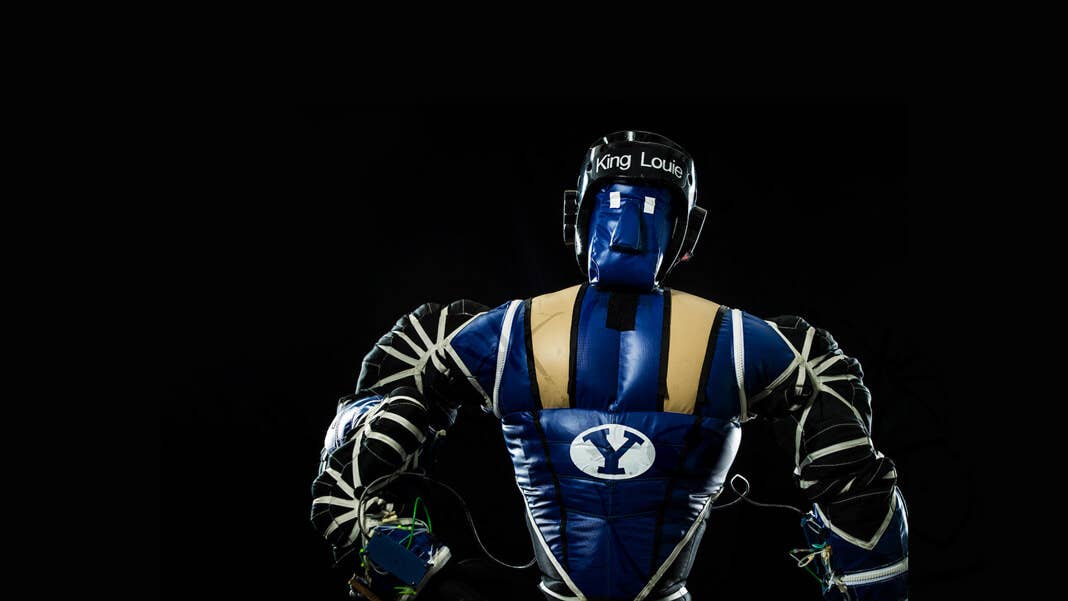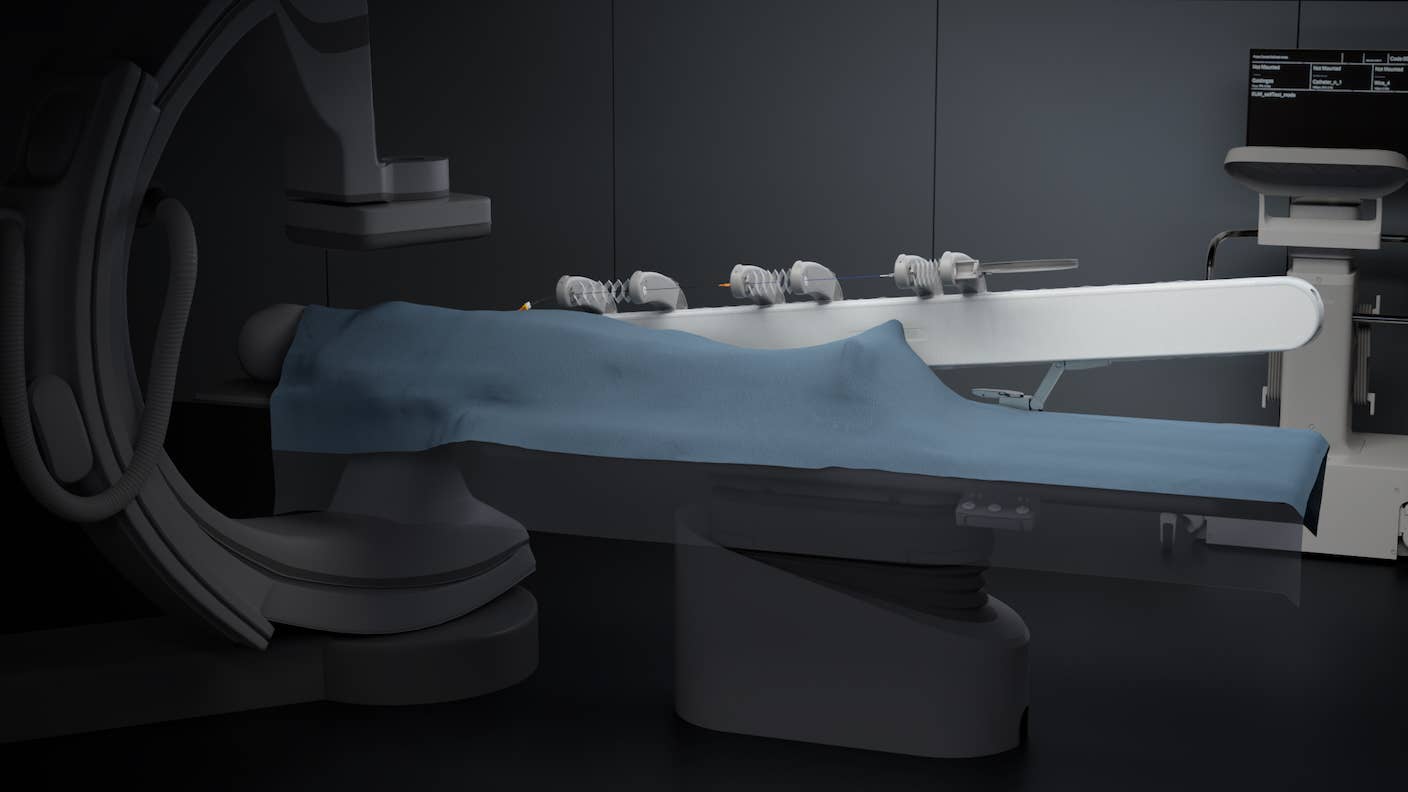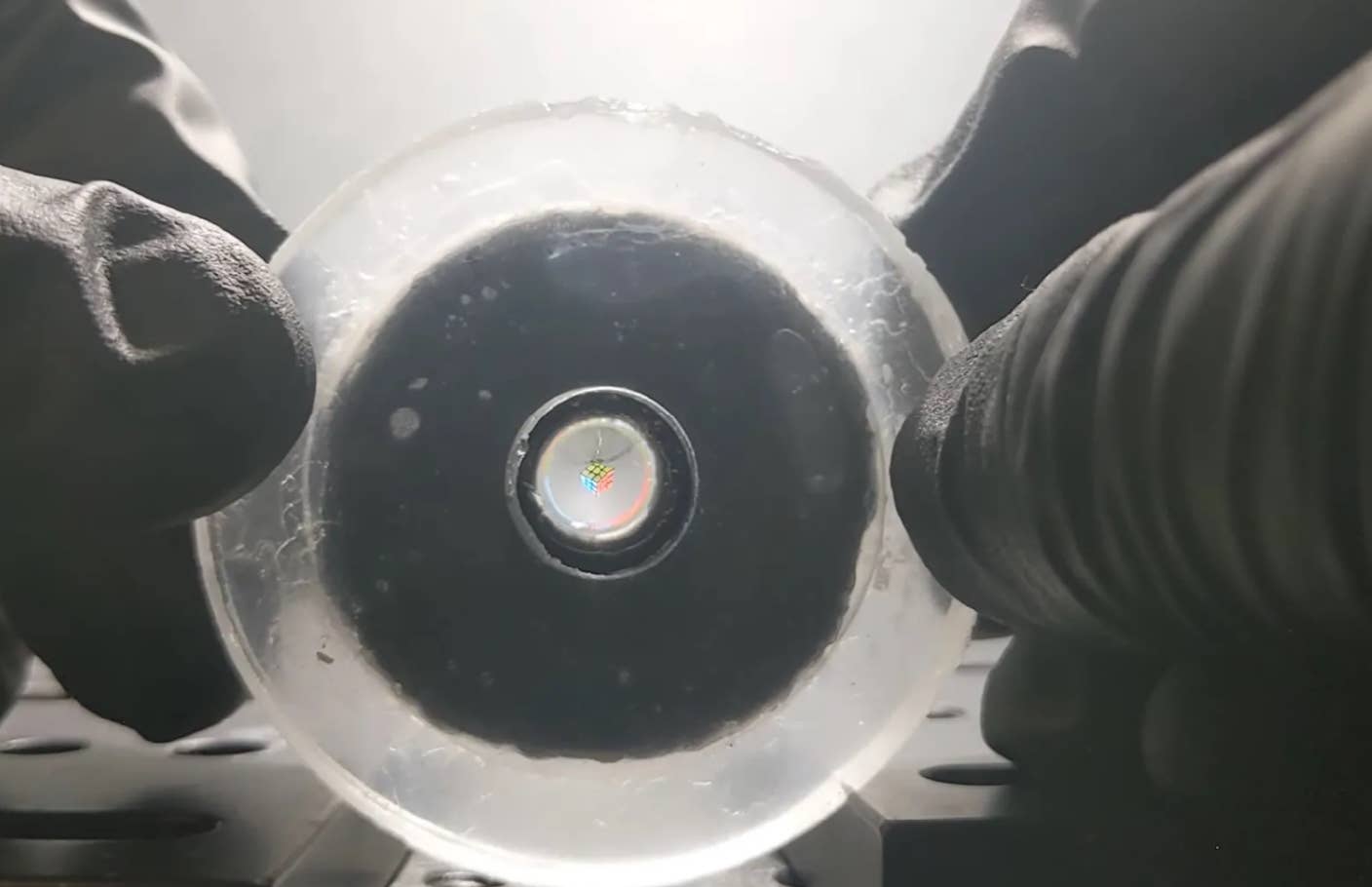Inflatable Robot Astronauts and How to Control Them

Share
The typical cultural image of a robot—as a steel, chrome, humanoid bucket of bolts—is often far from the reality of cutting-edge robotics research. There are difficulties, both social and technological, in realizing the image of a robot from science fiction—let alone one that can actually help around the house. Often, it’s simply the case that great expense in producing a humanoid robot that can perform dozens of tasks quite badly is less appropriate than producing some other design that’s optimized to a specific situation.
A team of scientists from Brigham Young University has received funding from NASA to investigate an inflatable robot called, improbably, King Louie. The robot was developed by Pneubotics, who have a long track record in the world of soft robotics.
In space, weight is at a premium. The world watched in awe and amusement when Commander Chris Hadfield sang “Space Oddity” from the International Space Station—but launching that guitar into space likely cost around $100,000. A good price for launching payload into outer space is on the order of $10,000 per pound ($22,000/kg).
For that price, it would cost a cool $1.7 million to launch Boston Dynamics’ famous ATLAS robot to the International Space Station, and its bulk would be inconvenient in the cramped living quarters available. By contrast, an inflatable robot like King Louie is substantially lighter and can simply be deflated and folded away when not in use. The robot can be manufactured from cheap, lightweight, and flexible materials, and minor damage is easy to repair.
Inflatable Robots Under Pressure
The concept of inflatable robots is not new: indeed, earlier prototypes of King Louie were exhibited back in 2013 at Google I/O’s After Hours, flailing away at each other in a boxing ring. Sparks might fly in fights between traditional robots, but the aim here was to demonstrate that the robots are passively safe: the soft, inflatable figures won’t accidentally smash delicate items when moving around.
Health and safety regulations form part of the reason why robots don’t work alongside humans more often, but soft robots would be far safer to use in healthcare or around children (whose first instinct, according to BYU’s promotional video, is either to hug or punch King Louie.) It’s also much harder to have nightmarish fantasies about robotic domination with these friendlier softbots: Terminator would’ve been a much shorter franchise if Skynet’s droids were inflatable.
Robotic exoskeletons are increasingly used for physical rehabilitation therapies, as well as for industrial purposes. As countries like Japan seek to care for their aging populations with robots and alleviate the burden on nurses, who suffer from some of the highest rates of back injuries of any profession, soft robots will become increasingly attractive for use in healthcare.
Precision and Proprioception
The main issue is one of control. Rigid, metallic robots may be more expensive and more dangerous, but the simple fact of their rigidity makes it easier to map out and control the precise motions of each of the robot’s limbs, digits, and actuators. Individual motors attached to these rigid robots can allow for a great many degrees of freedom—individual directions in which parts of the robot can move—and precision control.
For example, ATLAS has 28 degrees of freedom, while Shadow’s dexterous robot hand alone has 20. This is much harder to do with an inflatable robot, for precisely the same reasons that make it safer. Without hard and rigid bones, other methods of control must be used.
In the case of King Louie, the robot is made up of many expandable air chambers. An air-compressor changes the pressure levels in these air chambers, allowing them to expand and contract. This harks back to some of the earliest pneumatic automata. Pairs of chambers act antagonistically, like muscles, such that when one chamber “tenses,” another relaxes—allowing King Louie to have, for example, four degrees of freedom in each of its arms.
The robot is also surprisingly strong. Professor Killpack, who works at BYU on the project, estimates that its payload is comparable to other humanoid robots on the market, like Rethink Robotics’ Baxter (RIP).
Be Part of the Future
Sign up to receive top stories about groundbreaking technologies and visionary thinkers from SingularityHub.


Proprioception, that sixth sense that allows us to map out and control our own bodies and muscles in fine detail, is being enhanced for a wider range of soft, flexible robots with the use of machine learning algorithms connected to input from a whole host of sensors on the robot’s body.
Part of the reason this is so complicated with soft, flexible robots is that the shape and “map” of the robot’s body can change; that’s the whole point. But this means that every time King Louie is inflated, its body is a slightly different shape; when it becomes deformed, for example due to picking up objects, the shape changes again, and the complex ways in which the fabric can twist and bend are far more difficult to model and sense than the behavior of the rigid metal of King Louie’s hard counterparts. When you’re looking for precision, seemingly-small changes can be the difference between successfully holding an object or dropping it.
Learning to Move
Researchers at BYU are therefore spending a great deal of time on how to control the soft-bot enough to make it comparably useful. One method involves the commercial tracking technology used in the Vive VR system: by moving the game controller, which provides a constant feedback to the robot’s arm, you can control its position. Since the tracking software provides an estimate of the robot’s joint angles and continues to provide feedback until the arm is correctly aligned, this type of feedback method is likely to work regardless of small changes to the robot’s shape.
The other technologies the researchers are looking into for their softbot include arrays of flexible, tactile sensors to place on the softbot’s skin, and minimizing the complex cross-talk between these arrays to get coherent information about the robot’s environment. As with some of the new proprioception research, the project is looking into neural networks as a means of modeling the complicated dynamics—the motion and response to forces—of the softbot. This method relies on large amounts of observational data, mapping how the robot is inflated and how it moves, rather than explicitly understanding and solving the equations that govern its motion—which hopefully means the methods can work even as the robot changes.
There’s still a long way to go before soft and inflatable robots can be controlled sufficiently well to perform all the tasks they might be used for. Ultimately, no one robotic design is likely to be perfect for any situation.
Nevertheless, research like this gives us hope that one day, inflatable robots could be useful tools, or even companions, at which point the advertising slogans write themselves: Don’t let them down, and they won’t let you down!
Image Credit: Brigham Young University.
Thomas Hornigold is a physics student at the University of Oxford. When he's not geeking out about the Universe, he hosts a podcast, Physical Attraction, which explains physics - one chat-up line at a time.
Related Articles

In Wild Experiment, Surgeon Uses Robot to Remove Blood Clot in Brain 4,000 Miles Away

A Squishy New Robotic ‘Eye’ Automatically Focuses Like Our Own

This Crawling Robot Is Made With Living Brain and Muscle Cells
What we’re reading